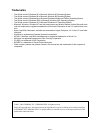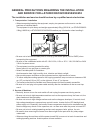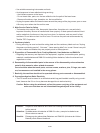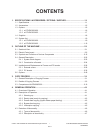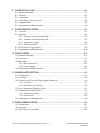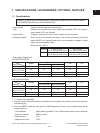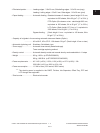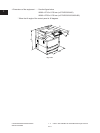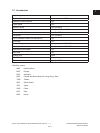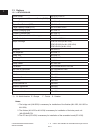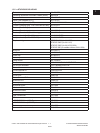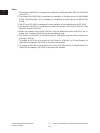
GENERAL PRECAUTIONS REGARDING THE INSTALLATION
AND SERVICE FOR e-STUDIO350/352/353/450/452/453
The installation and service should be done by a qualied service technician.
1. Transportation / Installation
• When transporting/installing the equipment, employ two persons and be sure to use the
positions as indicated below.
The equipment is quite heavy and weighs approximately 83kg (182.98 lb.): e-STUDIO350/450
/ 86kg (189.59 lb): e-STUDIO352/353/452/453 therefore pay full attention when handling it.
• Be sure not to hold the movable parts or units (e.g. the control panel, ADU or RADF) when
transporting the equipment.
• Be sure to use a dedicated outlet with AC 110V/13.2A, 115V or 127V / 12A, 220-240V or 240V
/ 8A for its power source.
• The equipment must be grounded for safety.
Never ground it to a gas pipe or a water pipe.
• Select a suitable place for installation.
Avoid excessive heat, high humidity, dust, vibration and direct sunlight.
• Also provide proper ventilation as the equipment emits a slight amount of ozone.
• To insure adequate working space for the copying operation, keep a minimum clearance of 80
cm (32”) on the left, 80 cm (32”) on the right and 10 cm (4”) in the rear.
• The socket-outlet shall be installed near the equipment and shall be easily accessible.
• Besuretoxandpluginthepowercablesecurelyaftertheinstallationsothatnoonetrips
over it.
2. Service of Machines
• Basically, be sure to turn the main switch off and unplug the power cord during service.
• Be sure not to touch high-temperature sections such as the exposure lamp, the fuser unit, the
damp heater and their periphery.
• Be sure not to touch high-voltage sections such as the chargers, developer, IH control circuit,
high-voltage transformer, exposure lamp control inverter, inverter for the LCD backlight and
power supply unit. Especially, the board of these components should not be touched since the
electric charge may remain in the capacitors, etc. on them even after the power is turned OFF.
• Be sure not to touch rotating/operating sections such as gears, belts, pulleys, fan, etc.
• Be careful when removing the covers since there might be the parts with very sharp edges
underneath.
• When servicing the machines with the power turned ON, be sure not to touch live sections and
rotating/operating sections. Avoid exposure to laser radiation.
07/11




